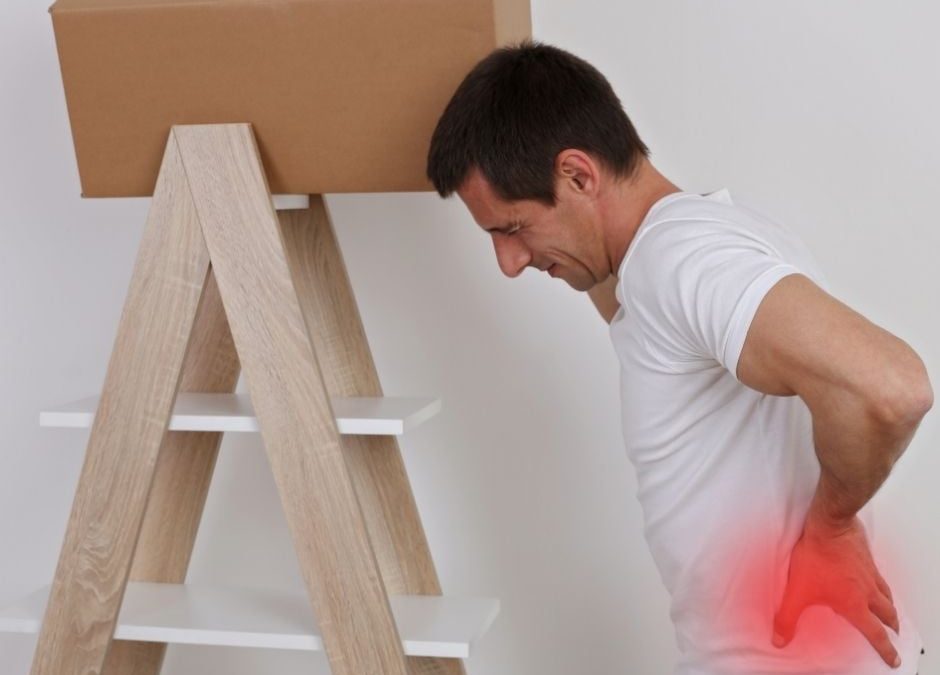People come for physiotherapy with many different types of injury, not only sports injuries.
Are you doing home improvements, working out in the garden or carrying out repetitive movements to finish that lockdown project you set yourself?
Just this week, our physiotherapist Lou assessed someone who, over a number of weekends, many hours at a time, had been up a ladder, pruning roses overhead. This involved a repetitive action whilst leaning, arching back, turning and overreaching, generally favouring one side. One lifting movement of a heavy object had put his back into spasm on one side with pain radiating down the same leg. Here’s why:
At the back of each spinal segment, a pair of small facet joints connect the spine’s vertebral bones. The facet joints of the lumbar (lower back) spine bear a large amount of stress and weight, making them vulnerable to degeneration and injury. These joints are richly innervated with many spinal nerves, which makes them susceptible to developing pain that is often felt in the lower back and/or leg (sciatica).
Treatment at the initial assessment included some manual therapy and acupuncture with advice to treat with ice (an ice cube on the affected area rather than an ice pack) and heat at home to help reduce the pain and inflammation.
To optimise recovery, further physiotherapy treatment may include:
– strengthening and stretching exercises to keep the lumbar spine as strong and flexible as possible
– soft tissue treatment and massage
– postural advice and exercises to reduce any extra strain placed on the lower back
First aid for an acute back spasm
What can I do?
Firstly, try not to panic, think of it like you would an ankle sprain. The most likely cause is due to an injury to the muscles and/or ligaments supporting your spine. Your muscles are in spasm and will tense up more if you go into panic mode.
Your symptoms will settle, usually within 4-6 weeks, but there are some simple measures you can take to help facilitate your recovery.
Apply ice to the painful area intermittently for 15-20 minutes at a time, 4-8 times a day. Continue for at least 48 hours. If your back muscles feel really tight, heat can be very relaxing and soothing using a hot water bottle. Use what works for you, or alternate between the two.
Try sleeping on your side with your legs curled up in a foetal position with a pillow between your knees; this can help take the pressure off your back.
Over the counter pain relief can be very helpful, and enable you to keep moving; you can combine simple paracetamol and an anti-inflammatory e.g ibuprofen. Please consult with your GP or pharmacist if you are unsure whether you can take both together.
Cut back on your usual activities for a day or two, but keep moving slowly and gently to prevent your muscles from tightening up further.
Change your position regularly.
Use deep breathing exercises for relaxation.
Box breathing: try exhaling for the count of four through your mouth, holding your lungs empty for the count of four, inhaling through your nose at the same pace, and holding in your lungs for a count of four before exhaling. Imagine the four sides of a box as you do this. Repeat for two minutes.
Gentle stretches can be helpful to elongate tight muscles and promote healing. Try going on your hands and knees and gently rocking your bottom towards your heels pushing through your hands x15. Try this regularly during the day. Don’t forget to breathe and relax as you do this. There are many different exercises that may help to ease your symptoms. Please do arrange an appointment if you are keen to move, but just don’t know which exercises might be helpful.
Once you feel able to, try going outside for a short walk, this will promote blood flow required for healing.
Understandably, it can be a worrying time, so if you think you need further advice and treatment, please do call the clinic, we are here to help.
Most back strains can be treated at home, but do call your GP if you experience back pain together with any of the following symptoms:
– fever
– weight loss
– redness or swelling
– pain down both legs and past your knees
– recent trauma
– loss of bladder or bowel control
– difficulty passing urine
– numbness around your genitals, buttocks or anus
Don’t forget: back pain is very common and although it can be very uncomfortable, it is not usually serious and will resolve given time, patience and a little knowledge.
